I'm sure most people have heard something about the Standing Rock protest against the Dakota Access pipeline in North Dakota. The concern of the protesters was that the pipe being tunneled under the Missouri river could leak and contaminate the river, the source of water for many people including the people living on the Standing Rock Reservation. There were a total of three protest camps the first bing the Sacred Stone camp located on the South side of the Cannonball River where it flows into the Missouri River. The second camp, Rosebud, was an overflow camp set up after the Sacred Stone camp became too crowded. The third camp, Oceti Sakowin, was located on the North bank of the Cannonball river. This was the largest of the camps and is the one that was seen on many of the new stories about the protest.
On February 23rd the last of the protesters were removed from the Oceti Sakowin Camp by the police and National Guard troops. On February 24th I arrived on site to work on the cleanup of the camps. The concern was that the camps could flood during the spring snow melt sending a large amount of debris into the Cannonball and Missouri rivers. While we worked on cleaning up the Oceti Sakowin Camp the police and troops were clearing out the Rosebud camp followed by the Sacred Stone camp. It's one of the strangest sites I have ever worked on with the police and National Guard presence surrounding us. We had to travel through military check points to get to and from work every day and military vehicles were buzzing around us all day.
I brought two cameras, an Olympus OM-2n with a Zuiko MC Autozoom f/4 35-70mm lens and a Leica IIIa with a Leitz Elmar 5cm f/3.5 lens. I had less than two days notice that I was going there so I grabbed several rolls of film from the fridge including Kodak T-Max 400, Ilford Delta 100, Kodak Super Gold 400 and an expired roll of Kodak Versatility 400. All of the color photos were shot with the Olympus OM-2n and all the Black and White film was shot with the Leica IIIa. The black and white film was developed in Caffenol C-H (rs). Working 12 hours per day for two week straight I was lucky to find much time to take photos but after two weeks I manged to burn through about 3 and a half rolls.
I chose to focus my photographs on remnants of the tribal cultural stuff rather than the mountains of debris that we were cleaning up. The tribe was responsible for removing their cultural items since many of them are considered sacred, this included Sweat Lodges, Tipi's and Prayer Ties to name a few. Please forgive me if this has too many photos and words but it was a historical event and I am very lucky to be able to document some of it.
P.S. I don't want to get into a political debate about the pipeline so, like I told my crew on site, "keep your stupid political opinions to yourself".
This first set was shot with the Olympus OM-2n on Kodak Super Gold 400. The first shot was my view of the Oceti Sakowin camp when I first arrived on February 24th.
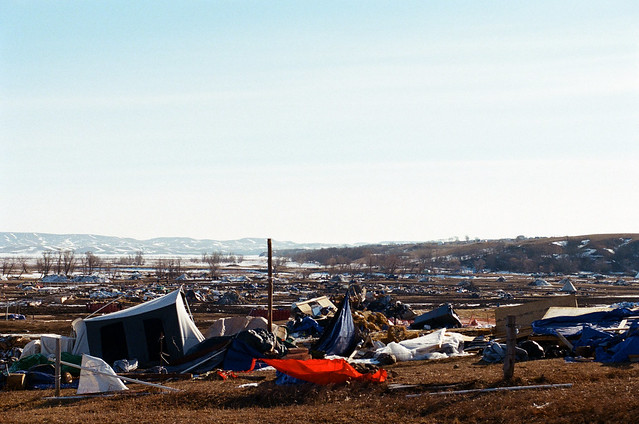 Oceti Sakowin Camp
Oceti Sakowin Camp by
Bryan Chernick, on Flickr
This was the last Tipi standing at the Oceti Sakowin camp before the tribe carefully took it down and saved the canvas and poles.
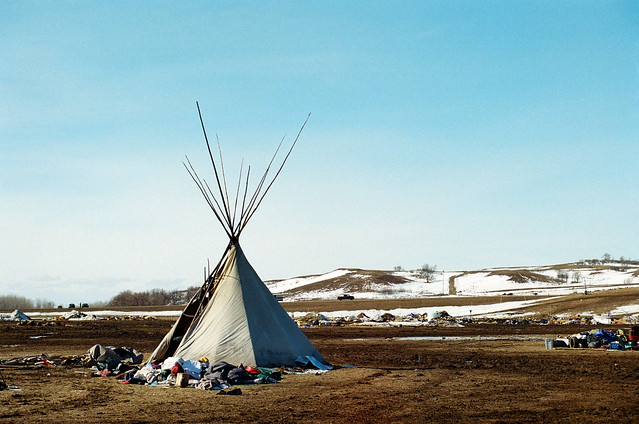 Tipi at Oceti Sakowin
Tipi at Oceti Sakowin by
Bryan Chernick, on Flickr
One of the last protest banners on Highway 1806 above the Oceti Sakowin camp.
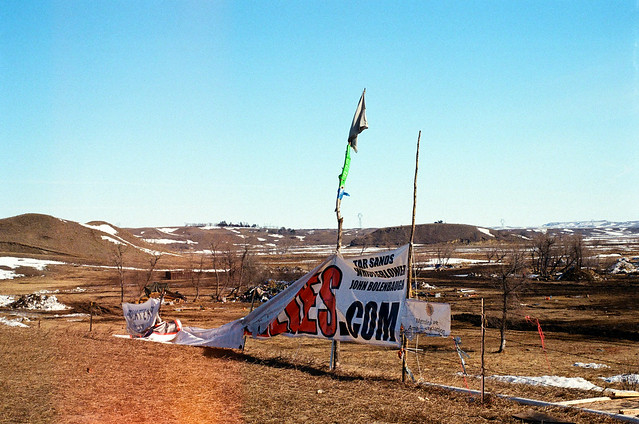 Banner
Banner by
Bryan Chernick, on Flickr
Prayer ties and ribbon on a tree along the Cannonball River. A prayer ties is a cloth pouch of tobacco tied with string. There are usually several strung together, each color represents a different type of prayer. Tobacco is considered a powerful medicine by Native American tribes. The Souix traditionally used a tobacco called kinnikinnick which consisted of tree bark and shrub leaves.
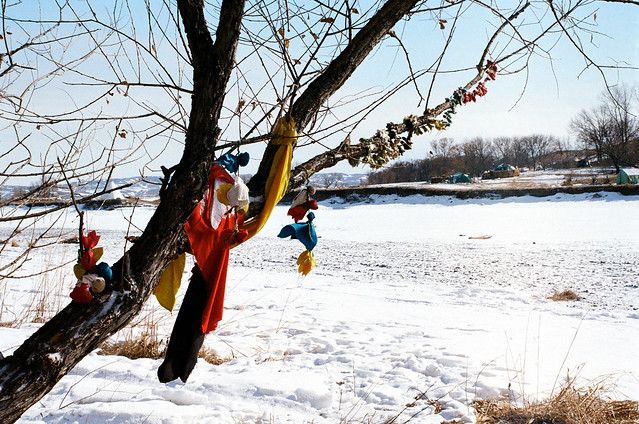 Prayer Ties
Prayer Ties by
Bryan Chernick, on Flickr
Dream Catcher.
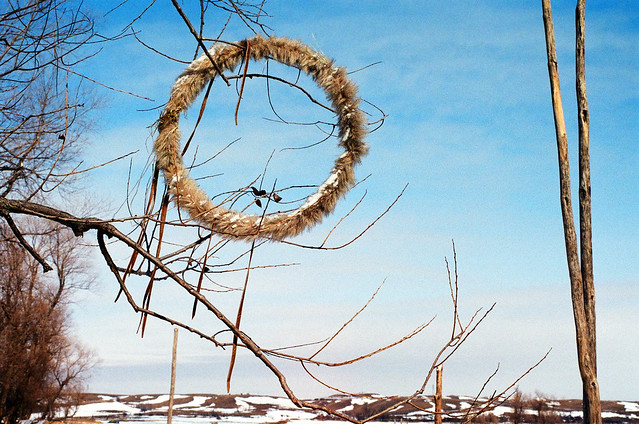 Dream Catcher
Dream Catcher by
Bryan Chernick, on Flickr
Ribbons in a tree. I'm not sure what the significance of the ribbons is but there were a lot of them.
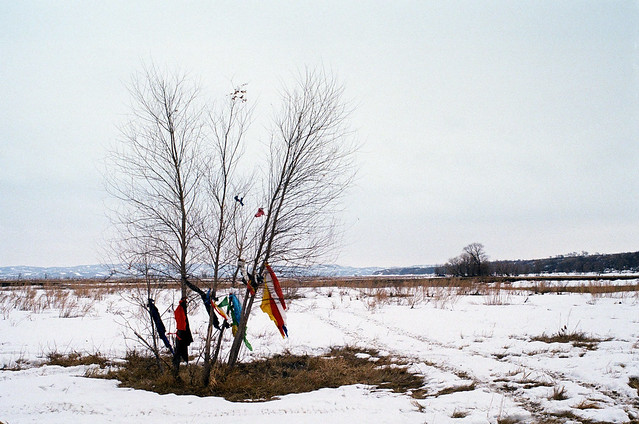 Ribbon Tree
Ribbon Tree by
Bryan Chernick, on Flickr